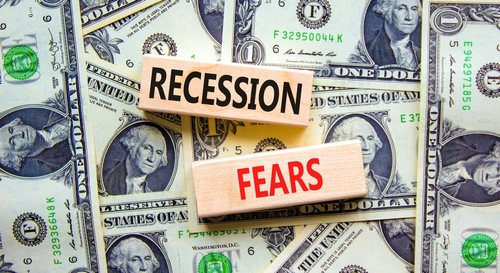

Summary
- Earnings season is going reasonably well. With 90% of the S&P 500 companies reporting so far, earnings beats are running at an average 4.3%, slightly better than 3.9% in 1Q.
- Many companies are maintaining full year outlooks for revenue and earnings despite ongoing challenges from inflation and supply chains. Companies see risks of a slowdown or recession but do not expect it soon.
- Those companies reducing outlooks are mostly doing so modestly, but their stock prices tend to get hit hard, suggesting investors are not pricing in risks of slowdown or recession yet.
This article is only available to Macro Hive subscribers. Sign-up to receive world-class macro analysis with a daily curated newsletter, podcast, original content from award-winning researchers, cross market strategy, equity insights, trade ideas, crypto flow frameworks, academic paper summaries, explanation and analysis of market-moving events, community investor chat room, and more.
Summary
- Earnings season is going reasonably well. With 90% of the S&P 500 companies reporting so far, earnings beats are running at an average 4.3%, slightly better than 3.9% in 1Q.
- Many companies are maintaining full year outlooks for revenue and earnings despite ongoing challenges from inflation and supply chains. Companies see risks of a slowdown or recession but do not expect it soon.
- Those companies reducing outlooks are mostly doing so modestly, but their stock prices tend to get hit hard, suggesting investors are not pricing in risks of slowdown or recession yet.
Market Implications
- Overall earning season is constructive, if not outright upbeat.
- These results are for 2Q. Keep in mind that it was later in the quarter that the slowdown and inflation really started to bite.
- If earnings weaken going forward, equities will likely sell off, perhaps sharply.
Consumer Staples
- Tyson Foods (TSN) reported soft adj. EPS – 1.94 vs 1.98 consensus. Prices were up 9% but volumes were down a massive 13%, showing consumers are really sensitive to the cost of meats and chicken. Several other consumer staples companies in the name-brand business have also reported weak volumes as they try to pass on higher costs.
We have seen this pattern in other name brand consumer staples companies – higher prices, lower volumes – although not to this extent. Clorox (CLX) is a recent example. Consumers are clearly turning to substitution to lessen the inflation bite.
Communications
- News Corp (NWS) posted adj. EPS of 0.37 vs 0.06 consensus on stronger digital advertising and subscriber growth. This is literally the first ad/subscriber-based company to report substantial strength. For now, I consider this a one-off.
Consumer Discretionary
- Hyatt Hotels (H) reported adj. EPS of 0.46 vs 0.06 consensus(!) on strong demand for luxury travel. No indication of projected demand in 2H, but keeping outlook in place.
- Aramark (ARMK), which provides commercial setting cafeterias, uniforms and related services, reported adj. EPS of 0.25 vs 0.24; but revenue was $4.1 bn vs $3.8bn, on strong demand as more people returning to the office.
- Wynn Resorts (WYNN) reported strong results for Las Vegas and weakness in Macau, reflecting heavy travel in the US and limited travel in China.
- Ralph Lauren (RL) reported better than expected revenue and EPS, but higher inventories and weaker than expected revenue forecast.
- Norwegian Cruises (NCLH) missed on revenue, EPS and occupancy, and gave a tepid outlook for bookings in 2023. It clearly is looking at a lot of uncertainty.
- In a warning, Micron Technology (MU) said sales of its memory chips may come in below previous projections. This follows weakness in other semiconductor companies exposed to PCs and consumer electronics, including Nvidia (NVDA), AMD (AMD) and Intel (INTC).
Consumer discretionary is a mixed bag – companies on the right side of the reopening trade are doing very well. Those offering more luxury goods or services, or that benefited from the stay/work at home lifestyle of the pandemic, are more challenged.
Housing
- Trex (TREX), a maker of non-wood decking materials (market cap $7.3 bn) reported robust EPS – but cut its 2H revenue forecast to $365-385mn, versus consensus $650mn, as it works down rising inventories. That is a massive gap!
- Louisiana-Pacific Corp (LPX), which makes building supplies and engineered wood products for homebuilders, missed on revenue and EPS and reported weaker than expected outlook. It said demand is softening but still good.
It appears suppliers to the homebuilding industry got overly optimistic in the early months of the year and need to work off inventories as new home construction slows.
In Summary…
A variety of companies are cutting their revenue/earnings projections modestly, and their stock prices are getting hit hard. Many other companies are maintaining full year outlooks – but so far there is little indication of companies increasing outlooks.
Many companies see evidence of a slowing economy and are aware of recession risks, but their outlooks reflect little concern that it will happen anytime soon, if at all.
